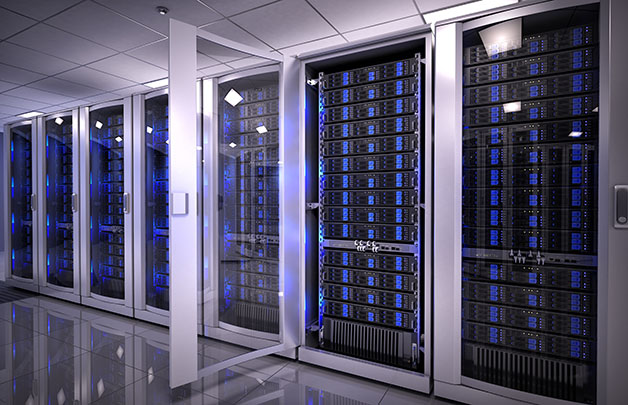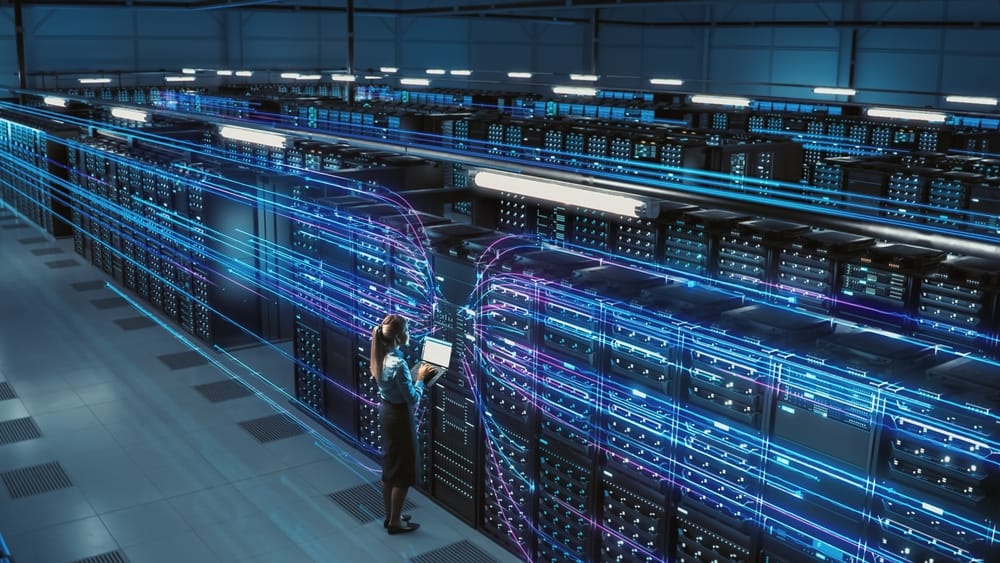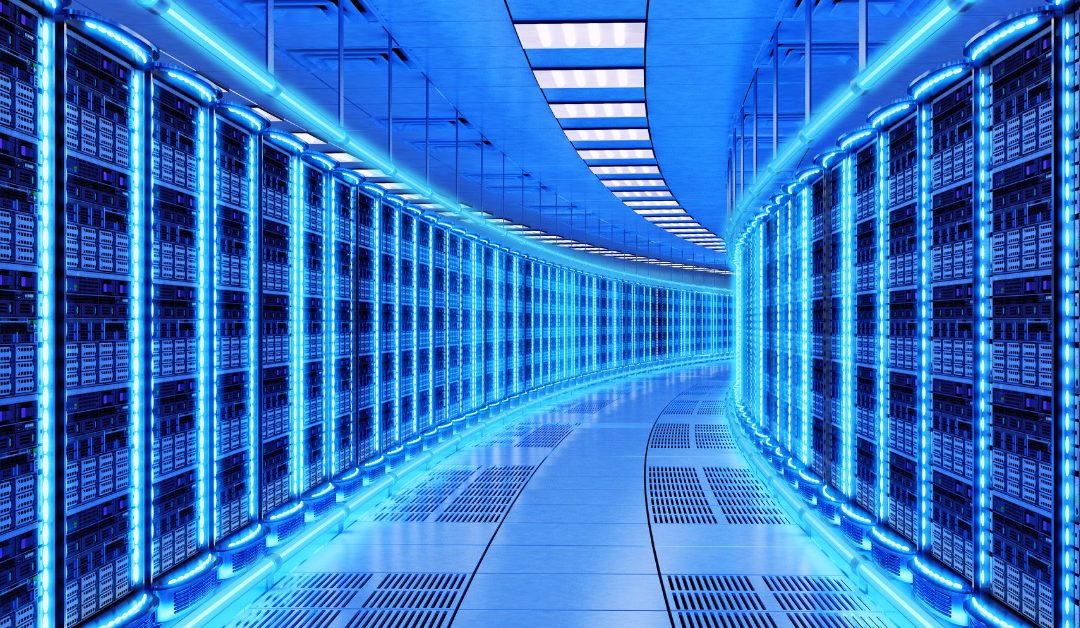All data centers are high-tech facilities that store and manage data for their customers, whether they are small companies, tech giants like Apple and Facebook or even government administrations. Two of the most important factors in categorizing these centers is their size and ownership. Based on how they are owned and how scalable they become, data centres can become totally different facilities.
This article will discuss one of the more critical types of data centers: hypRaed more: erscale. Hyperscale data centers are built by companies with significant data demands, such as cloud providers, which offer immense scalability and are optimized for massive workloads. Let’s read more.
Definition of hyperscale data centers
As the name suggests, hyperscale data centers are exceptionally large facilities built to support the massive data demands of big tech companies and cloud service providers. These centers prioritize efficiency and rapid scalability, using thousands of servers networked together to handle immense data processing and storage needs. By employing automation and streamlined infrastructure, they achieve faster response times and support applications requiring large amounts of real-time data, like artificial intelligence and streaming.
For example, a company like Amazon Web Services (AWS) relies on hyperscale data centers to power global cloud services. If more capacity is needed, these data centers can quickly expand by adding additional server clusters, maintaining high performance while supporting millions of users and vast amounts of data daily.
Read more: What is a Colocation Data Center?
How do hyperscale data centers work?
Hyperscale data centers work by linking thousands of servers into a single, unified network, which allows them to store and process massive amounts of data efficiently. To keep data safe, they use advanced software-defined networking (SDN) to monitor traffic and identify suspicious activity in real-time. Data is also encrypted, meaning it’s converted into a secure format before storage, making it hard for unauthorized users to access. Hyperscale centers have another important duty: “Data Management”.
Data management is handled by automated systems that distribute data across multiple servers to balance the load and prevent any one part from becoming overwhelmed. If a server fails, the data instantly reroutes to another, ensuring minimal downtime. Additionally, these centers use advanced cooling systems to maintain optimal temperatures, keep equipment stable, and prevent overheating. This setup allows hyperscale data centers to offer consistent performance and high security across large volumes of stored data.
Related article: What Is a Micro Data Center?
What Are the Key Factors of a Hyperscale Data Center?
What makes a hyperscale data centers so unique? These are the factors that companies look for when they select this type of center:
- Scalability: Easily expand by adding servers to meet increasing data and processing demands without compromising performance.
- Automation: Automated systems are used to manage, monitor, and maintain infrastructure, reduce manual intervention, and improve efficiency.
- Energy Efficiency: The facility employs advanced cooling and power management systems to minimize energy use, reducing costs and environmental impact.
- High Redundancy: Built-in backup systems ensure data remains accessible even if equipment fails, enhancing reliability.
- Standardization: Uses uniform hardware and software components to streamline management and reduce compatibility issues.
- Advanced Security: Implements encryption, firewalls, and network monitoring to protect data and detect threats in real time.
- Data Distribution: Spreads data across multiple servers, balancing the load and enhancing performance across the network.
- Global Reach: Often located worldwide to provide faster access and lower latency for global users.
Read more: What is an enterprise data center?
What Are the Benefits of a Hyperscale Data Center?
We now know that big companies with massive data management needs are better off selecting hyperscale centers. But what does this center do for them, and how does it help organizations?
- Cost Efficiency: Hyperscale data centers lower costs through economies of scale, using bulk resources and efficient power management.
- Rapid Deployment: New resources and capacity can be added quickly, allowing businesses to meet growth demands without delays.
- Enhanced Performance: High-speed connections and optimized hardware support intensive applications, from AI to real-time data analytics.
- Improved Resilience: Distributed infrastructure ensures minimal downtime, as data seamlessly reroutes during failures.
Read more: What is an Edge Data Center?
Hyperscale data centers vs enterprise data centers
Hyperscale and enterprise data centers are both large-scale and high-tech, so what makes them different?
They differ in purpose and design.
Hyperscale data centers are optimized for rapid scalability and are typically used by tech giants like Amazon, Google, and Microsoft to support cloud services and massive data demands. They rely heavily on automation and standardized hardware for efficiency. Enterprise data centers, however, are designed to serve a single organization’s specific needs, often focusing on custom configurations, higher security, and compliance requirements. While hyperscale centers prioritize scalability and flexibility, enterprise centers prioritize control, customization, and dedicated infrastructure for the organization’s own applications.
Read more: What is a Cloud Data Center?
Why hyperscale data centers are in different geographies
Hyperscale data centers are located in diverse geographies to reduce latency and provide users with faster access to data by being closer to their physical locations. Different ecosystems and climates can also benefit energy efficiency:
Cooler climates help reduce cooling costs, while certain locations offer abundant renewable energy sources, like hydroelectric power in northern regions. By spreading data centers worldwide, companies also gain resilience against regional power issues or natural disasters, ensuring continuous service. This geographic distribution supports a sustainable, reliable, and high-performance infrastructure that serves global users while adapting to environmental advantages of each area.
Examples of Hyperscale Data Centers
To better understand this type of centers, here are some examples:
1. Amazon Web Services (AWS)
AWS operates some of the largest data centers globally, supporting cloud services used by millions. Their facilities provide immense storage and computing power for applications ranging from e-commerce to AI, enabling companies to scale on demand and access global cloud solutions efficiently.
2. Microsoft Azure
Microsoft Azure’s hyperscale data centers offer extensive cloud solutions and virtual servers for businesses of all sizes. With data centers across several continents, Azure provides scalable resources and low-latency access, supporting enterprise-grade applications and services like machine learning, IoT, and business intelligence.
3. Google Cloud Platform (GCP)
Google’s hyperscale data centers power GCP, offering high-performance storage, machine learning, and analytics services. Google’s focus on energy efficiency and global reach ensures that companies can access powerful data solutions while minimizing environmental impact, with centers strategically located worldwide.
4. Facebook (Meta) Data Centers
Meta’s hyperscale data centers support social media applications with massive data storage and processing power. Optimized for high-speed connectivity and energy efficiency, Meta’s centers enable seamless user experiences across platforms like Facebook, Instagram, and WhatsApp, handling billions of data transactions daily.
5. Alibaba Cloud
Alibaba Cloud operates hyperscale data centers across Asia and beyond, serving e-commerce, finance, and more. These centers provide scalable resources, data analytics, and security features, meeting high data demands and supporting applications for businesses and governments throughout the region.
FAQ
-
Who typically uses hyperscale data centers?
Tech giants and cloud providers like Google and Microsoft typically use hyperscale data centers to support cloud services, large-scale applications, and vast amounts of data processing.
-
Are hyperscale data centers environmentally friendly?
Many hyperscale centers prioritize energy efficiency with advanced cooling systems and renewable energy sources to reduce their environmental impact while handling extensive data workloads.
-
How quickly can hyperscale data centers scale up?
Hyperscale centers can quickly add capacity, often within hours, by seamlessly integrating additional servers and resources to meet demand spikes and growing data requirements.



